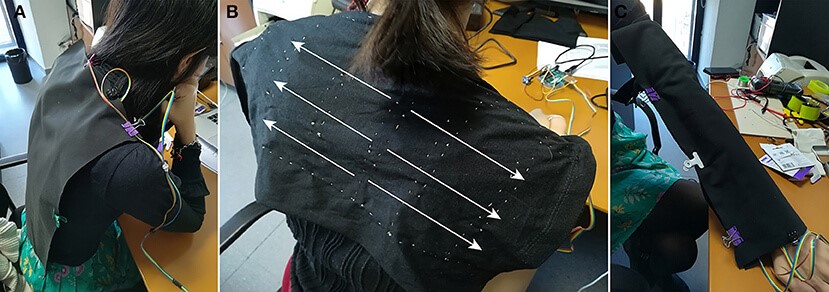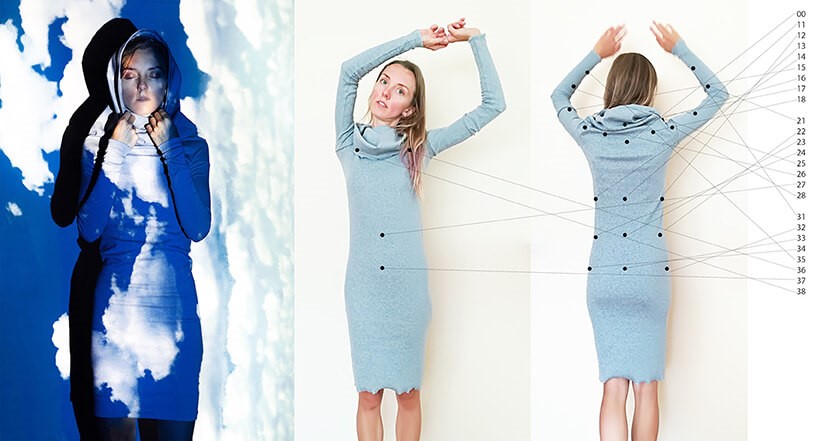Recently, a multidisciplinary team of scientific researchers undertook a project to explore how textiles and clothing can affect our physical and emotional behavior.
Currently, the Fashion industry is going through a revolution. From sustainable fashion to digitization, the industry has undergone a distinct change over the past few years.
Mental health conditions such as stress, anxiety and depression are on the rise worldwide. In fact, two of the most common mental health conditions, depression and anxiety, cause global economic losses of up to US $ 1 million per year, according to the World Health Organization.
These issues can significantly affect all areas of life, from study or work performance, to family and friends relationships, to the ability to participate in the community. And with the ongoing Covid-19 pandemic it is very correct to assume that more and more people are having this problem.
Though the severity of health conditions and treatments vary, mindfulness is the concentration of a person's entire perception on an object, event or person at where they are present in the present moment and distracting from their surroundings, or other emotional issues) often cited as an effective method of helping a person to focus. in the present, helps to reduce stress and anxiety. There are many online apps, books, and tools that humans can use to practice mindfulness, but would it be impressive if the clothes you wore could help you with this?
These are exactly what researchers Ana Tajadura-Jiménez, Aleksander Väljamäe and Kristi Kuusk are interested in discovering. Recently, the team held two user studies to see whether physical sensations generated by e-textiles affect body perception and emotional responses.

A major challenge of this research is personalization
“The starting point of research is the Magic Shoes project,” said Tajadura-Jiménez, Universidad Carlos III de Madrid and University College London.
“In that project and our previous Hearing Body project, we pioneered the use of sound to induce changes in body perception and review the effects of motor behavior. and emotional state. "
The Hearing Body project was implemented a few years ago. The goal of this project is to investigate the importance of sound to the body. The Magic Shoes project is continuing from this project. The study approaches a novel approach to addressing emotional and psychological barriers in physically inactive people by using acoustic feedback to change the way they perceive their bodies. Basically, by listening to different sounds, the researchers found that human feet feel lighter and longer, which encourages them to walk and even run.
Kristi Kuusk - Estonian Academy of the Arts, added: “From that concept, in the later Magic Lining project, we thought of using artistic expressions to change our self-perception through clothes".
Project Magic Lining took the Magic Shoes project one step further and explored in another direction through the use of electronic textiles and vibrations. The project focuses on the ability to change people's perception through the inside of the outfit and it is expected that these costumes will give the wearer a feel like their body is made of another material.
These projects subsequently led to current research - altering perceptions of the human body through electronic textiles and tactile metaphors. The aim is to see if vibrations can affect human body perception, which can affect their emotional state.
To test this hypothesis, the researchers conducted two experiments with two different experimental costumes of the Magic Lining project. The first prototype allowed for the creation of vibrations that could translate into body sensations when mounted on the inside of a garment. The system consists of 21 vibrating motors mounted on a knitted fabric, connected to a Shieldex conductive thread.
The research team conducted a combination of 6 possible samples and possible positions (three body positions with two vibrating patterns for each position). The participants were randomly assigned to feel their order and were then asked to describe their reactions and feelings. The team found that vibrating patterns that started in the middle of the back and spread outward made participants feel like their bodies were made of air, water, or sand, and gave them a sense of sensation. relaxed, healthy and confident.
The second experiment was conducted based on the experiences and lessons learned from the first. This second prototype consisted of 25 vibrating motors on felt fabrics. Based on the results from the first experiment, the team constructed a 'mind map' to show three distinct vibrations and two woven fabrics (nonwoven, fine polyester and black polyester waffle). to provide a sense of closeness to ideas about: water; clouds and rocks.
In the second experiment, each participant placed their hands on two samples of fabric and experienced each of the three vibrations. Based on their reaction, the researchers concluded that there is a correlation between the way materials give human perceptions and intended ideas.

The researchers found that different vibrations induce different emotional responses
"People wear clothes to help them feel more confident or comfortable in certain cases," said Mr. Tajadura-Jiménez. "However, the idea of an office suit or a party dress will be more about expressing yourself to others and showing your appearance to others."
“Our ideas are different; We are interested in promoting perceptions that others cannot perceive. We can show that changes in body perception due to sensory responses can lead to changes in human motivation and social behavior, emotional state, and physical satisfaction. and even myself. So the idea is that if I perceive my body differently (e.g. bigger, stronger, lighter), then I can feel calmer and more confident and this will shape the interaction. and my attitude towards the world and to others.
Although the research is novel and interesting, Kuusk believes that it will take more time for "sensory fashion" to become a part of our daily lives. Until now, the group is still researching ideas for fashion, clothing, self-awareness and e-textiles from different perspectives.
One of the main challenges that need to be considered before the sense fashion is implemented is personalization. We are all different and our perceptions will give preference to different types and stimuli.
"People may differ in their individual sensitivity to sensory feedback, preferences, sensory images, but also have different bodily ideals or concerns," explains Tajadura. -Jiménez.
To create the sensory experiences that lead to a fashion revolution, quite a bit of research is needed to understand how to maximize the desired effect of the sensory experience evoked by the outfit.
This is certainly a foresight for researchers, but there is a lot of potential and the team of 3 have discussed some future directions.
“First of all, the multi-sensory prototype in vibration stimulation combined with sound (or other sensory feedback) is a very promising research direction in which auditory metaphors can easily be produced. using minimal tactile stimulation, ”said Aleksander Väljamäe, from the School of Design Technology, at the University of Tallinn.
Another multi-sensory pairing may involve chemotherapy and chemical signaling. Our future studies will examine the effects of incorporating multiple sensory signals, while also taking into account the principles of sentimental perception.
Somewhere, it is possible that research has been developed into a neural feedback system. In the current study, the prototypes are only used to give sensations, but the researchers think they can create a closed-loop system, for example, your clothes can give you a boost. stress faster than you realize and provide mild feedback.
Third, this research could be used to improve tactile clothing. The technology, for example, can be used in social environments and combined with other sensors to create a different experience. Clothing can, for example, be used passively in a new type of cinema or actively in a theater environment.
In the context of the ongoing Covid-19 pandemic, this research has the potential to allow people to interact socially at great distances as well. “We also discussed the possibility of people interacting through their costumes,” said Tajadura-Jiménez. For example, one can trigger a specific vibration in another person to create a particular feeling, or some people can resonate with each other. This opens up a new field of research, which may be particularly relevant to the current Covid-19 epidemic where social exposure must be minimized ”
Fashion is a field that is changing a lot. And some of the key points of fashion education are referring to changing more towards providing positive emotions and caring for people instead of in the looks of things that can cause negative emotions. . In that direction, the team believes that in the near future there will be many meaningful collaborations with fashion designers.
The recent boom in smart apparel projects like Google's Jacquard and Tesla Suit demonstrate that these innovations have a place in society. Research by Kuusk, Väljamäe and Tajadura-Jiménez not only improves the efficiency of daily life and physical health, but also confirms the role of e-textiles in our emotions and spirits.
The current research mentioned in this article is partly supported by the funding of the Magic Shoes PSI2016-79004-R project (AEI / FedER, UE) by the Spanish Minister of Economy, Industry and Competition. . The Magic Lining VERTIGO project is part of the European Commission's STARTS program, based on technological elements from the Magic Shoes project. AT-J is supported by funding RYC-2014 -15421 by the Minister of Economy, Industry and Competition Spain and AV supported by Estonian Research Council PUT1518.
https://vinatex.com.vn/kham-pha-su-tinh-thuc-va-tu-nhan-thuc-ban-than-nho-vao-san-pham-det-may-dien-tu/
Source: vinatex.com.vn